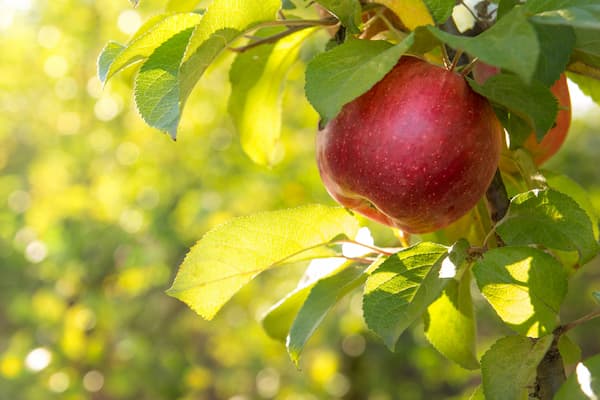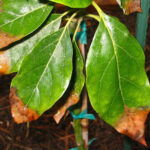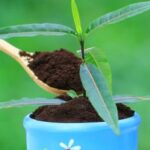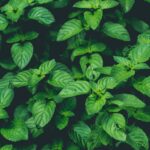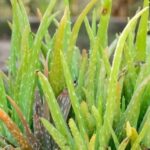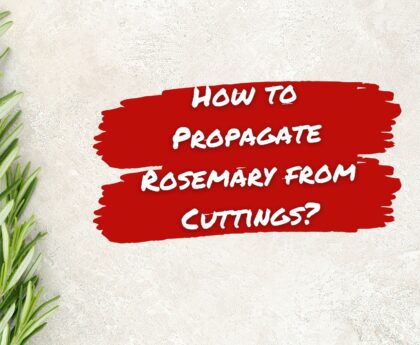Even though it isn’t autumn yet, your apple tree’s leaves are turning yellow and falling off early. What’s the problem, and how do you solve it?
An apple tree’s typical leaves are glossy green. A change in the weather, too much or too little water, a nutritional deficiency, or a sickness might all be causes of their becoming yellow.
Therefore, even if there are a variety of causes for apple trees to lose their leaves early, how can you tell which problem is to blame and how can we remedy it?
You’ll discover everything about the issues your apple tree falling leaves early as well as solutions if you keep reading.
1. Lacking Nutrients
The leaf may also become yellow, wilt, and fall off due to nutritional deficiencies.
Yellowing close to the leaf veins is the first sign of iron insufficiency. The entire leaf, with vibrant green veins, becomes yellow as it proceeds. The signs appear on the fresh growth and then spread all over the tree. Similar symptoms, including yellow leaves and green veins, are caused by manganese insufficiency.
Solutions:
- Your apple tree will benefit from frequent applications of high-quality fertilizer if you want to make sure it gets the nutrients it needs to grow and avoid early leaf loss.
- Chemical fertilizers often have higher potencies than natural fertilizers, necessitating just 1-2 applications per year. Younger apple trees require fertilizer with somewhat greater nitrogen levels, whereas mature apple trees often prefer fertilizer with a balanced NPK (such as a 5-5-5) ratio. Down to Earth’s Fruit Tree Mix, which is available on Amazon, is a fantastic fertilizer to use for apple trees.
- Compost is a more organic fertilizer that works better in the soil. It should thus be administered every one to two months. Compost contains nutrients that are also more readily absorbed by trees than the majority of commercial fertilizers and are good for soil life, which in turn helps apple trees stay healthy.
- The pH range for apple trees is 5.8 to 7.0. Using pH strips or a pH meter, you may evaluate the pH of the soil around your apple tree.
2. Weather Influence
Deciduous apple trees are found. Apple tree leaves turning yellow and dropping off as winter approaches is a common occurrence. In order to get ready for its winter dormancy phase, the tree will stop nutrients and water from reaching the leaves.
Chlorophyll levels will decrease and photosynthesis won’t be as efficient in the absence of sufficient nutrients and water. The leaves of plants turn yellow when chlorophyll, which gives them their green hue, is absent. They will eventually deteriorate without nourishment.
Solutions:
- While planted apple trees require shading from the sun or insulation from the cold with sheets or cardboard, potted apple trees may simply be carried within during harsh weather.
- In order to receive the most sunlight and warmth, you may also place apple trees to face south. It will also work if you plant next to a wall with a southern exposure since the wall will reflect heat and sunshine onto the tree into the evening. If you reside in a colder area, this is very beneficial.
- If you reside in a hotter area, think about using a permaculture strategy and using taller, heat-tolerant trees to create shade. All apple trees, especially those in hotter climates, require mulch as well. The soil and roots will be severely cooled as a result, which aids in cooling the remainder of the tree.
3. Over or Under-Watering
While planted apple trees require shading from the sun or insulation from the cold with sheets or cardboard, if get too littile sun or insulation from cold, apple trees still will fall leaves, so potted apple trees may simply be carried within during harsh weather.
In order to receive the most sunlight and warmth, you may also place apple trees to face south. It will also work if you plant next to a wall with a southern exposure since the wall will reflect heat and sunshine onto the tree into the evening. If you reside in a colder area, this is very beneficial. Otherwise, the apple trees will fall leaves.
Solutions:
- Check the soil’s dryness. To do this, insert a finger into the ground all the way up to the second knuckle. The intention is to only water the land when it is dry. Apply 2 inches of mulch and compost as well to assist the soil to retain moisture and lessen evaporation.
- Increases the soil’s fertility. The capacity of the soil to store water increases by 20,000 gallons per acre for every 1% increase in soil richness. Make careful to keep it at least 3 inches away from the tree’s trunk when applying it straight on top of the soil.
- Mulching protects the soil from drying out in the wind or becoming scorched by the sun. Simply said, it significantly lowers soil erosion and evaporation.
- To the base of apple trees, you may add 2 inches of mulch made of leaves, bark, pine needles, or straw. Apply new mulch every three to six months. Keep the mulch at least 3 inches away from the tree’s trunk, just like with compost, which prevents your apple trees falling leaves.
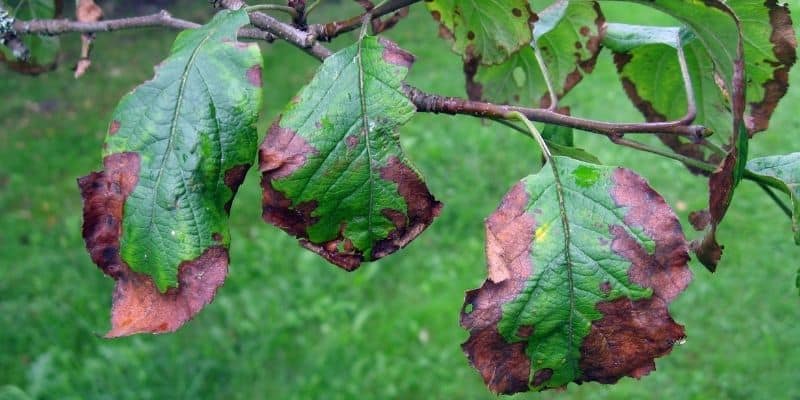
4. Diseases
Apple scab, cedar apple rust, and fire blight are a few diseases that can result in the curled, discolored, and dropping of the apple tree’s leaves. Even though certain apple tree diseases can be virulent and difficult to treat, treatments like pruning and sprays can greatly slow down and stop their development.
Solutions:
- Please Consult with professionals
5. Infestations of pests
Aphids and other pests can damage the tree and turn its leaves yellow. The most frequent insect that may attack apple trees and cause yellowing and curling of the leaves is the rosy apple aphid. To get rid of them, use insecticidal sprays.
Solutions:
- Please Consult with professionals
FAQ
1. Will Apple Trees Replenish Their Leaves?
In the early spring, if an apple tree is free of disease or other problems, it will regenerate its leaves. The rate of regrowth is determined by the amount of water, nutrients, and soil pH available to the tree. Whether stress can also impede the formation of new leaves. Reduce the apple tree’s stress for the highest possibility of regeneration.
Because apple trees are deciduous, they shed their leaves in the fall and winter. Evergreen plants, such as citrus trees, maintain their leaves throughout the year.
If your apple tree is shedding leaves in the summer, it is most likely suffering from a developing problem that has to be addressed. Check the sections above for the most typical problems that apple trees face, and if you’re still stuck, contact your local county extension office for further information.
2. How To Tell Apple Tree Are Falling Leaves?
During the spring and summer, the easiest way to detect whether an apple tree is dying is if it loses its leaves, blooms, or fruit. If the apple tree doesn’t have any leaves, prune a little branch and look for any green within to see if it’s still alive. You can also contact your county extension office for further information.

Conclusion
As you can see, there are a variety of reasons why apple tree leaves turn yellow and fall off. It’s critical to identify and address the root reason before your apples suffer.

